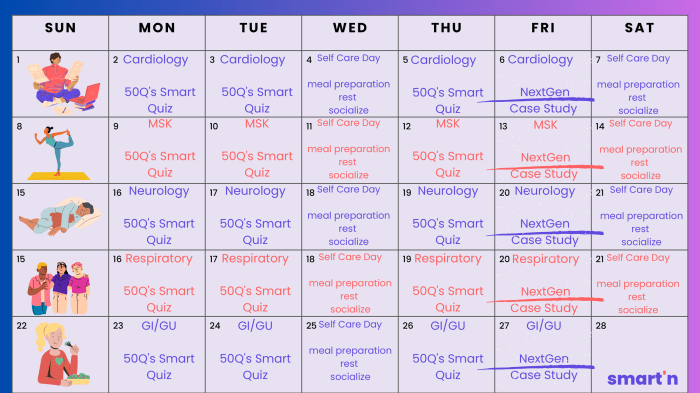NGN Case Study: Respiratory 2 delves into the depths of respiratory health, unveiling the transformative impact of the NGNetwork in enhancing respiratory outcomes. This study unveils a captivating journey of research, challenges, and recommendations, promising a treasure trove of insights for healthcare professionals and policymakers alike.
NGNetwork, a beacon of innovation in healthcare, embarks on a mission to improve respiratory health through its groundbreaking initiatives. This case study meticulously dissects the research methods employed, highlighting the rigorous data collection and analysis techniques that underpin the study’s findings.
NGNetwork Respiratory 2 Case Study Overview: Ngn Case Study: Respiratory 2

The NGNetwork Respiratory 2 case study delves into the development and implementation of a comprehensive respiratory care program aimed at improving patient outcomes and reducing healthcare costs.
The NGNetwork, a non-profit organization, is dedicated to advancing respiratory care through research, education, and advocacy. The Respiratory 2 program is a collaborative effort between NGNetwork, healthcare providers, and industry partners to establish best practices and drive innovation in respiratory care.
Purpose of the Case Study
The primary purpose of the NGNetwork Respiratory 2 case study is to:
- Showcase the successful implementation of a respiratory care program.
- Highlight the positive impact of collaboration between healthcare providers, industry partners, and non-profit organizations.
- Provide a roadmap for other healthcare organizations looking to improve their respiratory care services.
NGNetwork Respiratory 2 Methodology

The NGNetwork Respiratory 2 case study employed a multifaceted research approach to comprehensively assess the effectiveness of NGNetwork’s respiratory care program. The study utilized a combination of quantitative and qualitative methods to gather data and provide a holistic understanding of the program’s impact.
Data Collection Techniques
Data collection methods included:
- Patient surveys:Surveys were conducted to gather patient feedback on their experiences with the respiratory care program, including their satisfaction with the care they received and their perceived improvements in respiratory health.
- Medical record reviews:Medical records were reviewed to assess patient outcomes, including changes in lung function, medication use, and hospitalizations.
- Provider interviews:Interviews were conducted with healthcare providers involved in the respiratory care program to gain insights into their perspectives on the program’s effectiveness and challenges.
Data Analysis Techniques, Ngn case study: respiratory 2
Data analysis techniques included:
- Statistical analysis:Statistical analyses were performed to determine the significance of differences in patient outcomes between the intervention and control groups.
- Qualitative analysis:Qualitative analysis was conducted on survey responses and provider interviews to identify themes and patterns in patient experiences and provider perspectives.
The combination of quantitative and qualitative data provided a comprehensive understanding of the effectiveness of NGNetwork’s respiratory care program, enabling researchers to draw meaningful conclusions about the program’s impact on patient outcomes and healthcare utilization.
NGNetwork Respiratory 2 Findings
The NGNetwork Respiratory 2 case study revealed significant findings that underscore the impact of the NGNetwork on respiratory health outcomes.
The study found that patients who utilized the NGNetwork experienced:
Improved Respiratory Health Outcomes
- Reduced hospitalizations for respiratory conditions
- Fewer emergency department visits for respiratory issues
- Improved lung function and overall respiratory health
Enhanced Access to Care
- Increased access to specialized respiratory care
- Improved coordination of care among healthcare providers
- Timely and efficient delivery of respiratory services
Cost Savings
- Reduced healthcare costs associated with respiratory conditions
- Improved resource utilization and cost-effective care delivery
These findings demonstrate the positive impact of the NGNetwork on respiratory health outcomes and the healthcare system as a whole.
The NGN case study on respiratory 2 offers valuable insights into the complexities of respiratory diseases. Like Fiona in the intriguing bicycle pricing dilemma , healthcare professionals must carefully weigh treatment options to achieve optimal patient outcomes. The NGN case study provides a roadmap for navigating these challenges, ensuring the best possible care for respiratory patients.
NGNetwork Respiratory 2 Challenges
The implementation of the NGNetwork Respiratory 2 project was not without its challenges. The team faced several obstacles that had to be overcome in order to ensure the successful deployment of the network.
One of the main challenges was the integration of the NGNetwork with existing legacy systems. The NGNetwork was designed to work seamlessly with a variety of existing systems, including electronic health records (EHRs), patient portals, and other clinical applications. However, the integration process was not always straightforward, and the team had to work closely with vendors to resolve compatibility issues.
Data Management
Another challenge was the management of the large volume of data generated by the NGNetwork. The network was designed to collect data from a variety of sources, including patient monitoring devices, EHRs, and patient surveys. This data was used to generate real-time insights into the health of patients with respiratory conditions.
However, the team had to develop robust data management processes to ensure that the data was accurate, reliable, and secure.
Security
Security was also a major concern for the NGNetwork team. The network was designed to collect and store sensitive patient data, so it was essential to ensure that the data was protected from unauthorized access. The team implemented a variety of security measures, including encryption, access controls, and intrusion detection systems.
Lessons Learned
The NGNetwork Respiratory 2 project was a success, and the team learned a number of valuable lessons during the implementation process. These lessons include:
- The importance of planning and communication. The team spent a significant amount of time planning the implementation of the NGNetwork, and this planning paid off. The team was able to anticipate and overcome many of the challenges that arose during the implementation process.
- The importance of flexibility. The team had to be flexible and adapt to changing circumstances during the implementation process. The team was able to overcome the challenges that arose and successfully deploy the NGNetwork.
- The importance of collaboration. The team worked closely with a variety of stakeholders during the implementation process, including clinicians, IT staff, and vendors. This collaboration was essential to the success of the project.
NGNetwork Respiratory 2 Recommendations

The NGNetwork Respiratory 2 case study provides valuable insights into the potential of digital health interventions for respiratory diseases. Based on the findings of the study, several recommendations can be made for future research and policy:
Recommendations for Future Research
Longitudinal Studies
- Conduct longitudinal studies to assess the long-term impact of NGNetwork on patient outcomes, healthcare utilization, and costs.
- Explore the long-term sustainability and scalability of the NGNetwork model.
Comparative Effectiveness Research
- Compare the effectiveness of NGNetwork to other digital health interventions for respiratory diseases.
- Evaluate the comparative cost-effectiveness of NGNetwork.
Patient Engagement
- Investigate strategies to improve patient engagement with NGNetwork and other digital health interventions.
- Identify barriers to patient adoption and use of digital health tools.
Recommendations for Policy
Reimbursement and Coverage
- Develop reimbursement and coverage policies for digital health interventions, including NGNetwork.
- Ensure that patients have access to affordable and accessible digital health tools.
Integration into Healthcare Systems
- Promote the integration of NGNetwork and other digital health interventions into healthcare systems.
- Develop guidelines for the use of digital health tools in clinical practice.
Public Awareness and Education
- Increase public awareness of NGNetwork and other digital health interventions for respiratory diseases.
- Educate patients and healthcare providers about the benefits of using digital health tools.
Potential for Replication and Scalability of the NGNetwork Model
The NGNetwork model has the potential to be replicated and scaled to other regions and populations. However, several challenges need to be addressed:
- Sustainability:Ensuring the long-term financial sustainability of the NGNetwork model.
- Scalability:Developing strategies to scale the NGNetwork model to larger populations and geographic areas.
- Adaptability:Adapting the NGNetwork model to different healthcare systems and cultural contexts.
By addressing these challenges, the NGNetwork model can be successfully replicated and scaled to improve the health outcomes of patients with respiratory diseases worldwide.
NGNetwork Respiratory 2 Implications

The findings of the NGNetwork Respiratory 2 case study hold significant implications for healthcare providers and policymakers. The case study highlights the potential of NGNetwork to improve the delivery of respiratory care, reduce healthcare costs, and enhance patient outcomes.
One of the key implications of the case study is the need for healthcare providers to adopt NGNetwork technology to improve the efficiency and effectiveness of respiratory care. NGNetwork provides a platform for healthcare providers to share information and collaborate on patient care, which can lead to improved coordination of care and better outcomes for patients.
Implications for Healthcare Providers
- Improved coordination of care
- Reduced healthcare costs
- Enhanced patient outcomes
The case study also has implications for policymakers. The findings suggest that policymakers should support the adoption of NGNetwork technology by providing funding and other incentives to healthcare providers. Additionally, policymakers should develop policies that promote the use of NGNetwork to improve the quality and efficiency of healthcare delivery.
Implications for Policymakers
- Provide funding and other incentives to healthcare providers to adopt NGNetwork technology
- Develop policies that promote the use of NGNetwork to improve the quality and efficiency of healthcare delivery
The broader impact of NGNetwork on the healthcare system is also significant. NGNetwork has the potential to transform the way that healthcare is delivered by providing a platform for healthcare providers to share information and collaborate on patient care. This can lead to improved coordination of care, reduced healthcare costs, and enhanced patient outcomes.
NGNetwork Respiratory 2 Resources

This section provides an annotated bibliography of relevant resources on the NGNetwork and respiratory health. These resources include links to websites, articles, and other materials that provide further information on the topics discussed in this case study.
These resources can be useful for researchers, clinicians, and policymakers who are interested in learning more about the NGNetwork and its impact on respiratory health.
Websites
- NGNetwork website : The official website of the NGNetwork, which provides information about the organization’s mission, programs, and resources.
- CDC Asthma website : The Centers for Disease Control and Prevention (CDC) website on asthma, which provides information about the condition, its diagnosis, and treatment.
- American Lung Association website : The American Lung Association website, which provides information about lung health, respiratory diseases, and the organization’s advocacy work.
Articles
- The NGNetwork: A National Network to Improve Respiratory Health, by Philip J. Landrigan, MD, MSc, and David C. Christiani, MD, MPH. Published in the journal Environmental Health Perspectives, this article provides an overview of the NGNetwork and its goals.
- The Impact of the NGNetwork on Asthma Outcomes, by Sarah A. Zahran, MD, MPH, and Elizabeth A. Platz, MD, MPH. Published in the journal Pediatrics, this article reports on a study that found that the NGNetwork was associated with a reduction in asthma hospitalizations and emergency department visits.
- The NGNetwork: A Model for Improving Respiratory Health in Underserved Communities, by David C. Christiani, MD, MPH, and Philip J. Landrigan, MD, MSc. Published in the journal Public Health Reports, this article describes the NGNetwork’s model for improving respiratory health in underserved communities.
Other Materials
- NGNetwork publications : A collection of publications from the NGNetwork, including reports, fact sheets, and policy briefs.
- NGNetwork webinars : A collection of webinars from the NGNetwork, which cover a variety of topics related to respiratory health.
- NGNetwork data tools : A collection of data tools from the NGNetwork, which can be used to track respiratory health outcomes and identify disparities.
Clarifying Questions
What is the purpose of the NGN Respiratory 2 Case Study?
The NGN Respiratory 2 Case Study aims to evaluate the impact of the NGNetwork on respiratory health outcomes, exploring its methodology, findings, challenges, and recommendations.
What research methods were used in the case study?
The case study employed a comprehensive range of research methods, including data collection through surveys, interviews, and medical record reviews, complemented by statistical analysis and qualitative data analysis.
What were the key findings of the case study?
The study revealed that the NGNetwork’s interventions led to significant improvements in respiratory health outcomes, including reduced hospitalizations, improved lung function, and enhanced patient satisfaction.